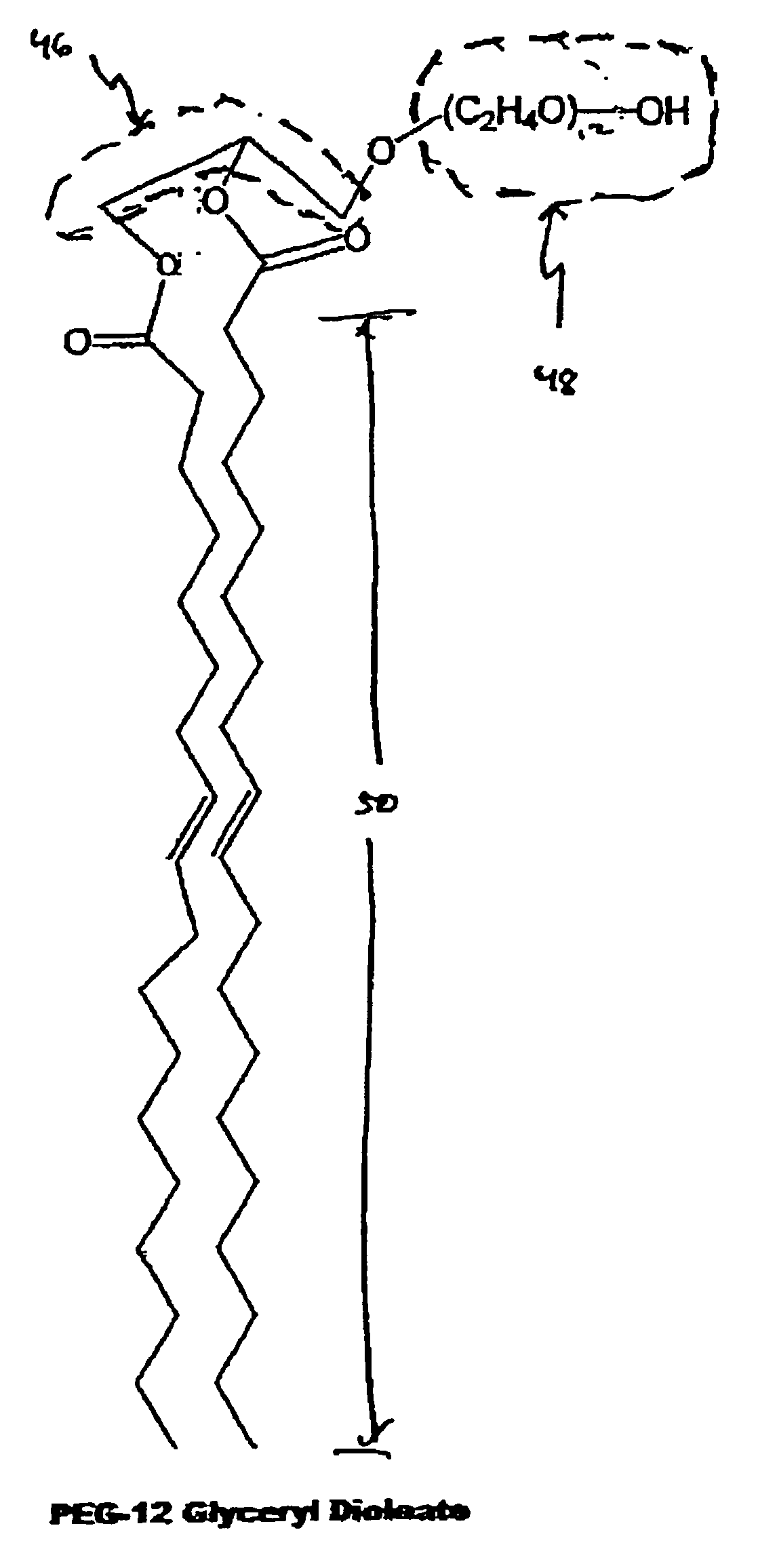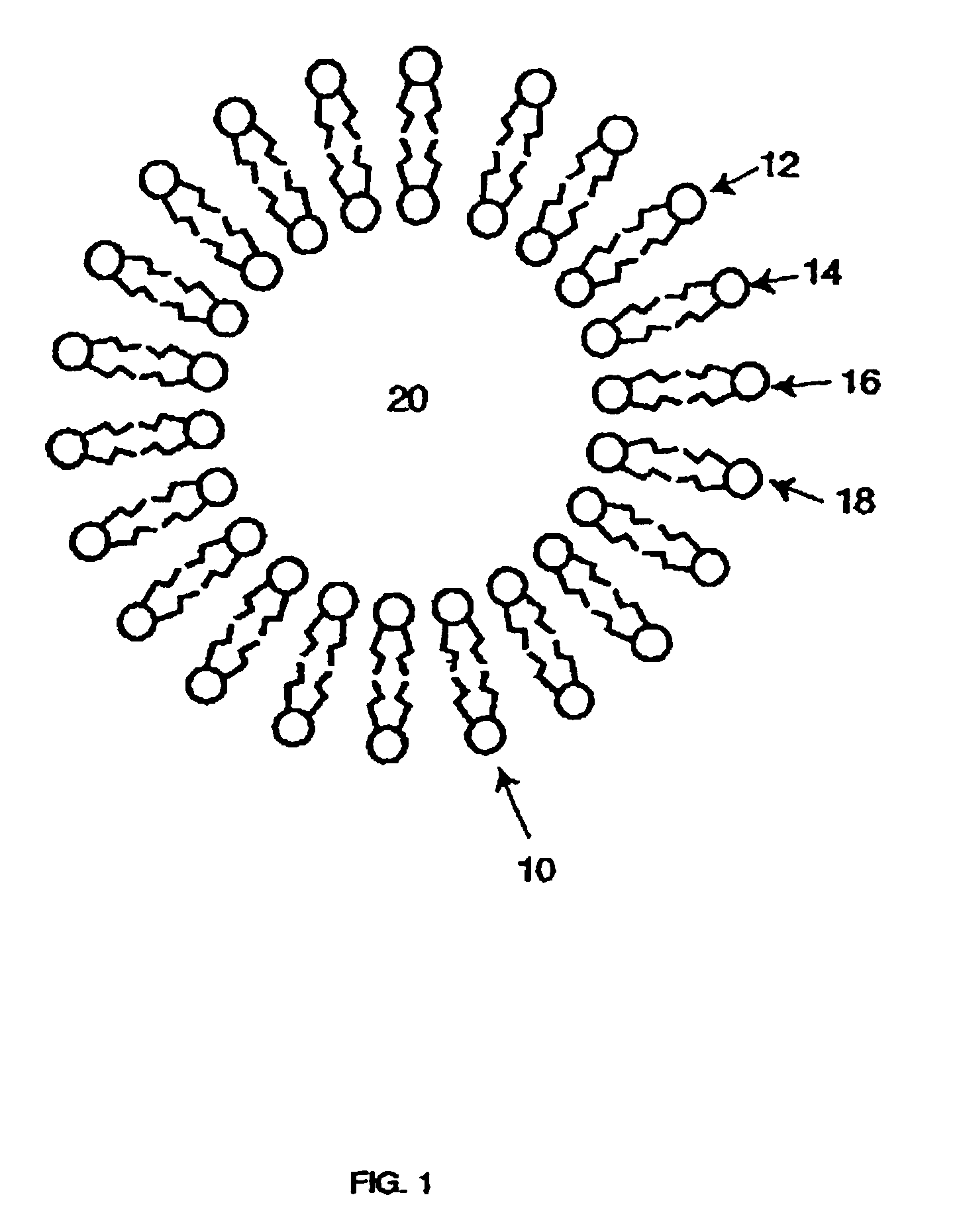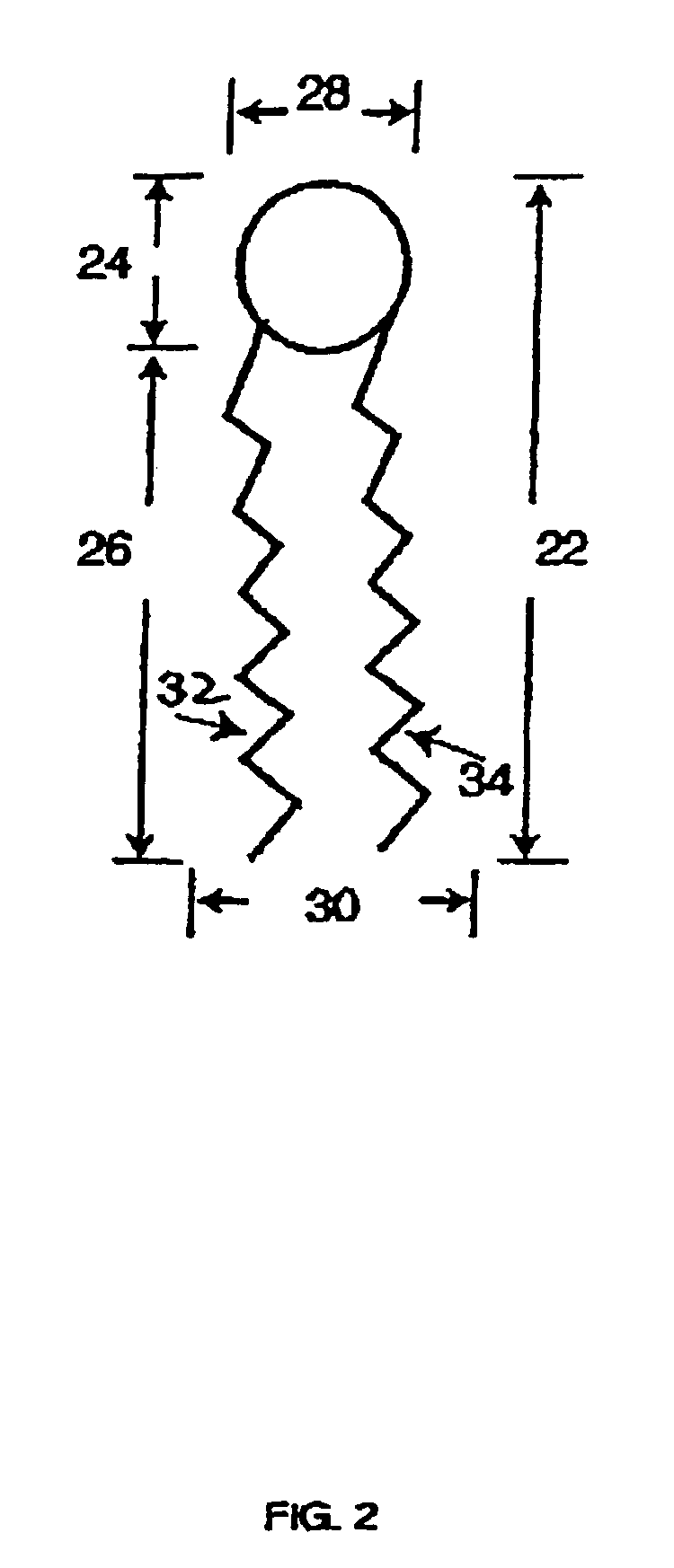Self forming, thermodynamically stable liposomes and their applications
a thermodynamic stable, self-forming technology, applied in the field of liposomes, can solve the problems of variability between batches in manufacturing, colloid instability, and difficulty in scale-up sterilization
- Summary
- Abstract
- Description
- Claims
- Application Information
AI Technical Summary
Problems solved by technology
Method used
Image
Examples
example 1
Spontaneous Liposomes
[0066]Single lipids were tested for their ability to spontaneously form liposomes when mixed with an aqueous solution. PEG-12 GDO was obtained from Global 7 (New Jersey). All other lipids were synthesized for the experiment. For each experiment, water and lipid were separately equilibrated at the appropriate temperature. Two weight percent lipid was added to the aqueous solution, and the solution was analyzed for the presence of liposomes by optical light microscopy, cryo TEM, freeze fracture TEM, or hot stage microscopy. The results of the experiments are shown in Table 1 above.
example 2
Formation of Multilamellar Liposomes with Cholesterol
[0067]Cholesterol, 10 Wt. %, was added to PEG-12 Glyceryl Dioleate and heated to about 60°–70° C., for 15–20 minutes. Water, at room temperature, was added to the heated lipid solution. The mixture was left overnight. Examination of the preparation under a optical microscopic with polarized light at 100 power and 600 power showed mulitlamellar liposomes in the size range of 20 nm to 40 nm. No crystals of cholesterol were observed.
example 3
Spontaneous Liposomes for Intravenously Administering Therapeutic Compounds
[0068]
IngredientConc. (% wt)Methotrexate5PEG-12 GDO10DI Water85
[0069]Methotrexate (Sigma) was dissolved in PEG-12 Glyceryl Dioleate and gently mixed for about 5 minutes. The resultant mixture was a clear solution. Deionized water was slowly added to the solution and gently mixed. The resultant mixture was a yellow, opaque solution. The preparation was examined under a light microscope with polarized light and showed a suspension of liposomes.
PUM
| Property | Measurement | Unit |
|---|---|---|
| molecular weight | aaaaa | aaaaa |
| molecular weight | aaaaa | aaaaa |
| phase transition temperature | aaaaa | aaaaa |
Abstract
Description
Claims
Application Information
 Login to View More
Login to View More - R&D
- Intellectual Property
- Life Sciences
- Materials
- Tech Scout
- Unparalleled Data Quality
- Higher Quality Content
- 60% Fewer Hallucinations
Browse by: Latest US Patents, China's latest patents, Technical Efficacy Thesaurus, Application Domain, Technology Topic, Popular Technical Reports.
© 2025 PatSnap. All rights reserved.Legal|Privacy policy|Modern Slavery Act Transparency Statement|Sitemap|About US| Contact US: help@patsnap.com



